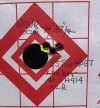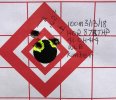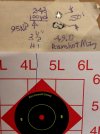Northerngos
Member
Lots of interesting suggestions here that I haven't tried with mine, looking forward to testing them out. One thing to consider, if you want to eliminate barrel temp as a variable, petco or similar pet stores sell a little infrared temp reader. they are cheap, and the one I bought is very accurate. They are about the size of a AA battery. Taking an actual temp of the barrel between shots ensures cooling to true "first shot" temp, or second shot temp or whatever (rather than doing what I used to do which is touching the barrel and going by when it feels pretty cool) If "first shot temp" and "second shot temp" etc shots are grouped well within their particular temps that would be good info. If the groups at a particular temp range open up that might be solid info that when warm, the harmonics have changed due to a contact point etc.



